|
All words by the author, adapted from an Office of National Marine Sanctuaries weekly Situation Report. California Sea Grant state Sea Grant fellow with CINMS helps facilitate Mendocino MPA Collaborative ROV training The Marine Protected Area MPA Collaborative Network (MPACN), a California-based umbrella organization, representing fourteen collaborative groups now active along the coast, carries out projects that answer local needs regarding MPAs. As such, the MPACN’s individual collaboratives have applied for Trident® Remotely Operated Vehicles (ROVs) through Sofar’s S.E.E. Initiative grant program. Based on previous experience with Sofar’s Tridents® (small, portable ROVs), I was asked to attend the Mendocino MPAC ROV training in Fort Bragg in late June, 2019. Representatives from local agencies (e.g. California State Parks) and nonprofits (e.g. Noyo Center and California Reef Check) spent the day learning how to operate and maintain the small ROVs, and discussed applications for use and engagement. Through conversations with stakeholders, partners, and staff from the MPACN and Sofar, plans are in development to use Tridents® coast-wide to broadcast “live dives” from within California’s national marine sanctuaries. Stay tuned for more updates! And, be sure to check in on Sofar's Twitch page where future dives will be broadcasted. Special shout out to my host, and former lab mate, CA Reef Check's north coast manager Tristin McHugh (M.S.)! Clockwise from top right: Two separate groups of participants get a chance to “fly” Tridents®; Sofar marketing director Zack Johnson successfully uses a cell-booster to broadcast a dive to Sofar’s HQ in the Bay Area; the author and a CA State Park employee test a Trident in the surf, Z. Johnson briefs participants before the dives. Photos: Z. Johnson, P. Spector, N. Palma
0 Comments
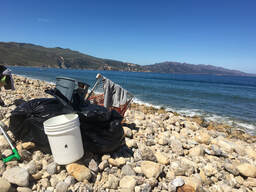 A (small) snapshot of marine debris collected from Chinese Harbor A (small) snapshot of marine debris collected from Chinese Harbor All words by Bren masters student Laura Ingulsurd, adapted from an Office of National Marine Sanctuary Weekly Situation Report. CINMS beach cleanup at Chinese Harbor on Santa Cruz Island collects 1,240 pounds of trash during “Get Into Your Sanctuary” weekend To kick off “Get Into Your Sanctuary” weekend, on Friday August 2, a mix of Channel Islands National Marine Sanctuary (CINMS) staff, interns, Sanctuary Advisory Council members, and local Santa Barbara lobster fishermen crossed the Santa Barbara Channel in the R/V Shearwater to clean trash off a Santa Cruz Island beach. Here's the breakdown from the day's activities:
Significance: The waters of Channel Islands National Marine Sanctuary are some of the state of California’s most productive fishing grounds. Sanctuary staff and local commercial fishermen are proud to collaborate and work together to clean up marine debris. Clockwise from top left: A lobster boat using its hydraulic pulley system to transport bagged trash off the beach (photo: Laura Ingulsrud); Summer interns repping “Get Into Your Sanctuary” shirts while removing trash from sanctuary shores (photo: Pike Spector); Part of the cleanup crew posing with their finds (photo: Sean Hastings).
California Sea Grant State Fellowship Monthly Progress Report Reporting Period: July 2019 Name: Pike Spector Agency: NOAA Channel Islands National Marine Sanctuary This month (July) marks my fourth full month with NOAA Channel Islands National Marine Sanctuary (CINMS) as part of the California Sea Grant State Fellowship. Most of this month was dedicated to an exciting Sanctuary Advisory Council meeting in Ventura county. However, I was also able to give two presentations to student groups and summer campers as part of my responsibilities to the outreach and education team. Sanctuary Advisory Council Meetings This month we held the third Sanctuary Advisory Council of the calendar year. In keeping pace with our schedule of alternating meetings across our constituency, we held this meeting at the Museum of Ventura County in Ventura, California. As part of my responsibility to support SAC meetings, I helped coordinate with the staff Ventura County Museum, and served as a liaison between their organization and CINMS. Further, with minimal support, the deputy superintendent and I were responsible for the set up and break down of the meeting space and associated technical equipment, although we did have help from two interns. During the meeting I was responsible for keeping audio and written recordings of the proceedings of the Council, and I ultimately compiled a written draft of the meeting’s key outcomes, which will be dispersed to the council. In preparation for the July meeting, I also attended the Conservation Working Group meeting (a subcommittee of the council) at the Environmental Defense Center. With help from an CSU COAST intern (Ms. Cassie Rogers), we invited CSU Channel Islands Professor Dr. Clare Steele to give a presentation on the state of marine debris in the Santa Barbara Channel. Although Dr. Steele studies a variety of anthropogenic impacts to the marine environment, she has gained notoriety for her work on microplastics. Dr. Steele gave an excellent overview on her research and the implications of continued microplastic exposure in the sanctuary and surrounding coastal ecosystems. We also heard from two National Marine Fisheries Service representatives: Ms. Laura McCue and Mr. Daniel Studt. Ms. McCue (the SAC NMFS member) is a marine mammal biologist with NMFS and gave an update on the recent gray whale unusual mortality event (UME). Reports of stranded and beached gray whales have been recorded at alarmingly high numbers since the beginning of summer; Ms. McCue updated the council on the most current information available and was able to draw parallels between this ongoing UME and the previous UME (1999-2000). Mr. Studt, a recreational fishing representative with NFS, outlined the NOAA Fisheries Priorities and Annual Guidance for 2019 and the 2019/20 engagement plan. This includes establishing a visible presence within the recreational fishing community both in person and on-line, and through the dissemination of outreach materials. Part of this strategy is to develop a mutual understanding of the priorities, challenges, and concerns for both recreational fishers and marine resource managers. 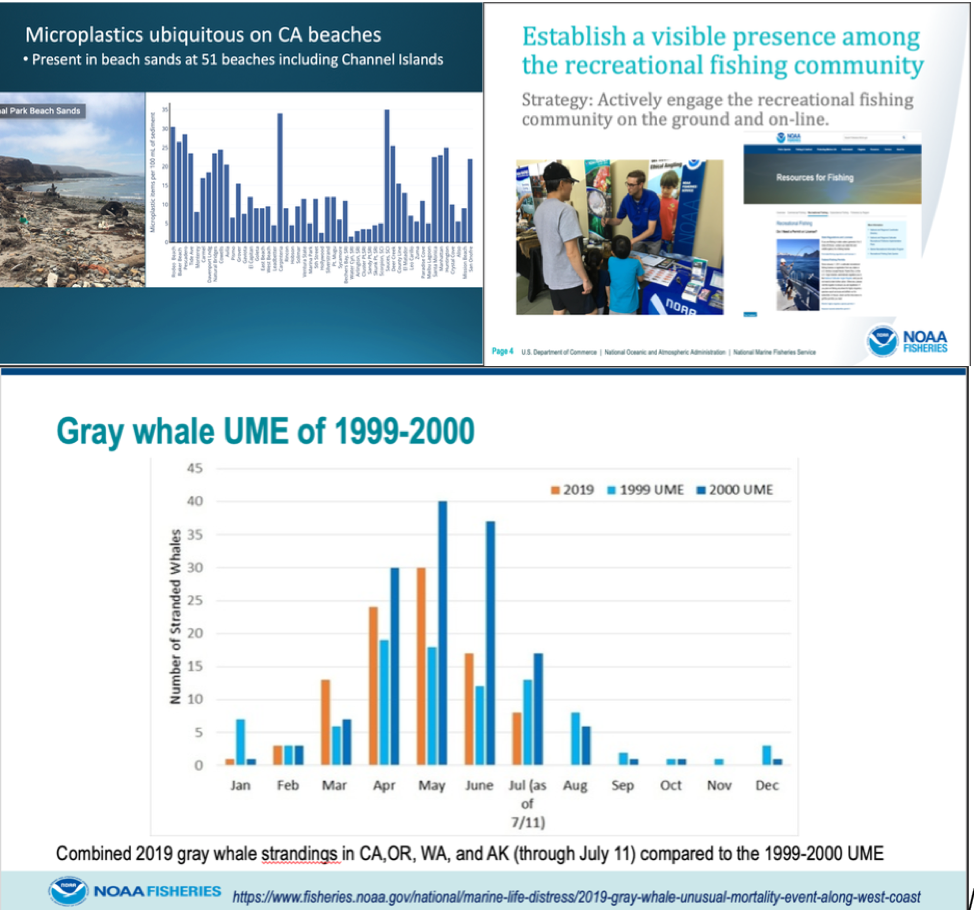 Clockwise from top left: A figure from Dr’s Steele’s microplastic presentation shows the extent of microplastics on California’s beaches; a slide from Mr. Studt’s recreational fishing engagement plan; a figure from Ms. McCue’s gray whale UME presentation comparing the 2019 UME with the 1999/2000 UME. Outreach and Education Two of the highlights of this month were guest presentations I was asked to give on behalf of CINMS. The first presentation was for the Scholastic Expeditions Summer Youth Program. Scholastic Expeditions provides week-long immersive summer camp experiences for students interested in learning more about natural history (among other programs). This particular program, “Galapagos of the North”, is centered around the biodiversity of the northern Channel Islands. I was asked to give a presentation on behalf of CINMS to the summer campers, all of which were from Santa Cruz, California. The second presentation I was invited to give was at the Seaside Village in Ventura, California, as part of the Seaside Village Kids Camp. The theme of this first session of the weekly kid’s camp was “baby shark”. Due to the attention CINMS has received over the recent basking shark sightings, I was delighted to talk to 60+ children (ages 3-9) about the sharks of the Santa Barbara Channel. Research
No new developments this month. Management Plan This month we began preparation for the release of the Notice of Intent for public scoping meetings leading up to the redrafting of the 10-year management plan. I participated on several exciting calls related to the roll out of the management plan itself and began helping to develop a communications plan. Unrelated to the management plan, CINMS is in the process of developing a new website. As such, I am helping design the management plan section. Social Media A vital component of my fellowship year is to actively update CINMS’s Facebook and Twitter accounts. These activities help engage the community and increase awareness around the sanctuary’s goal of protecting the Channel Island’s natural and cultural resources. However, this month the number of posts on both Facebook and Twitter began to decrease. We did participate in several exciting campaigns (e.g. Get into Your Sanctuary and Shark Week). Regardless, CINMS still maintains a presence on social media Housekeeping This month I was able to participate in a Hazardous Waste Operations and Emergency Response (HAZWOPER) certification training, which is great to have on one’s resume. I also participated in several exciting webinars and continued to act as a liaison for CINMS as a Sanctuary Programs Specialist. |
AuthorPike Spector is currently a Research Operations Specialist with Channel Islands National Marine Sanctuary Archives
August 2022
Categories |
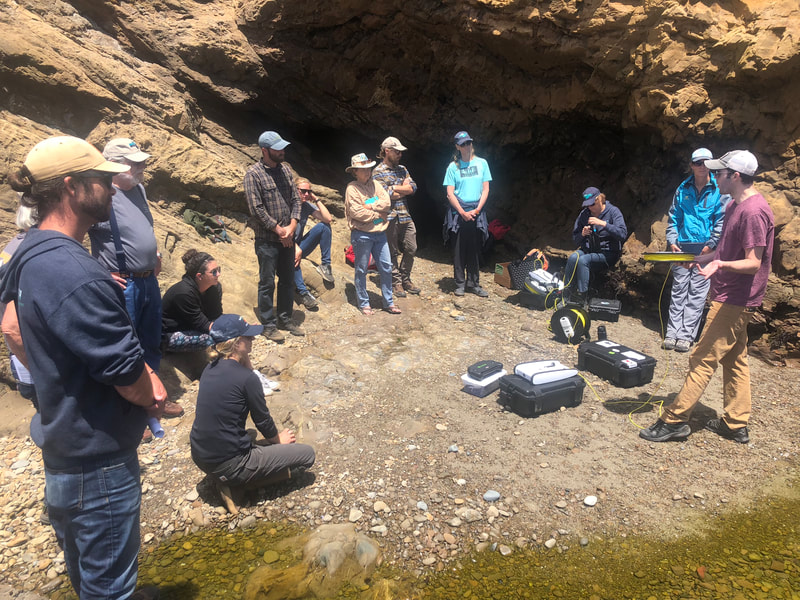
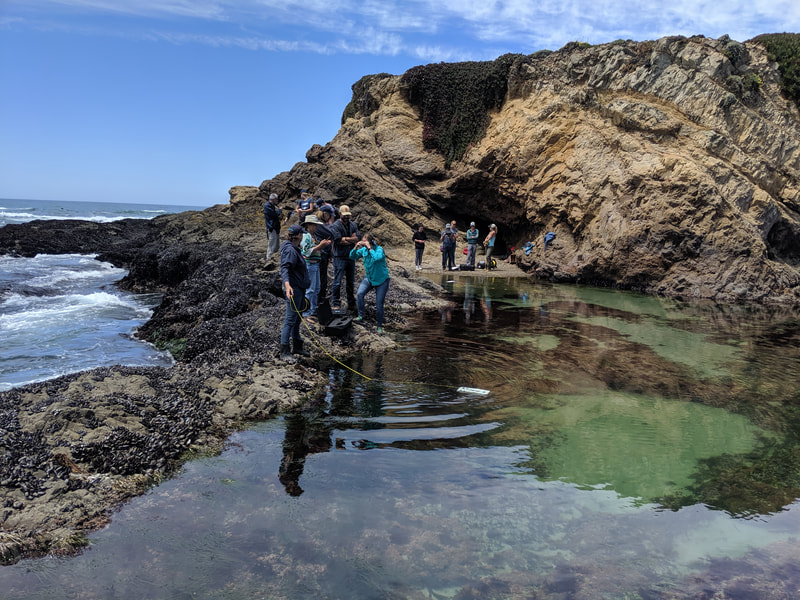
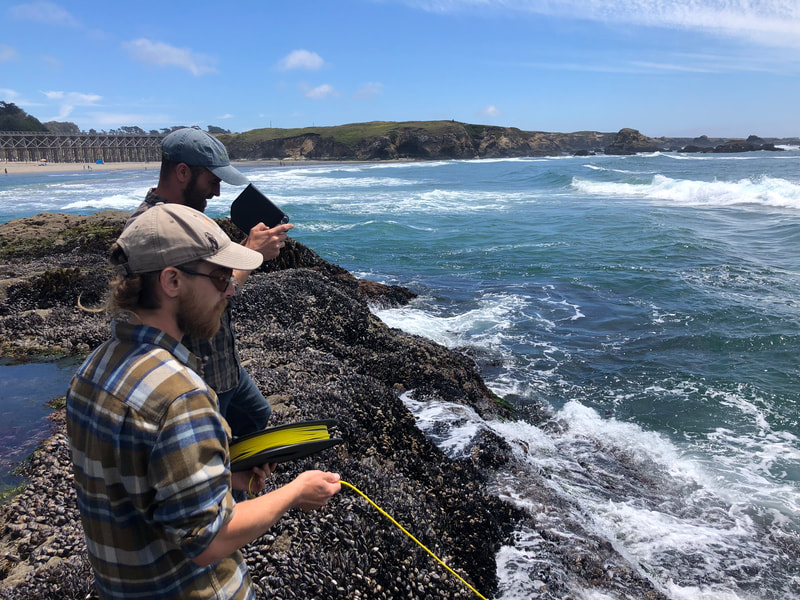
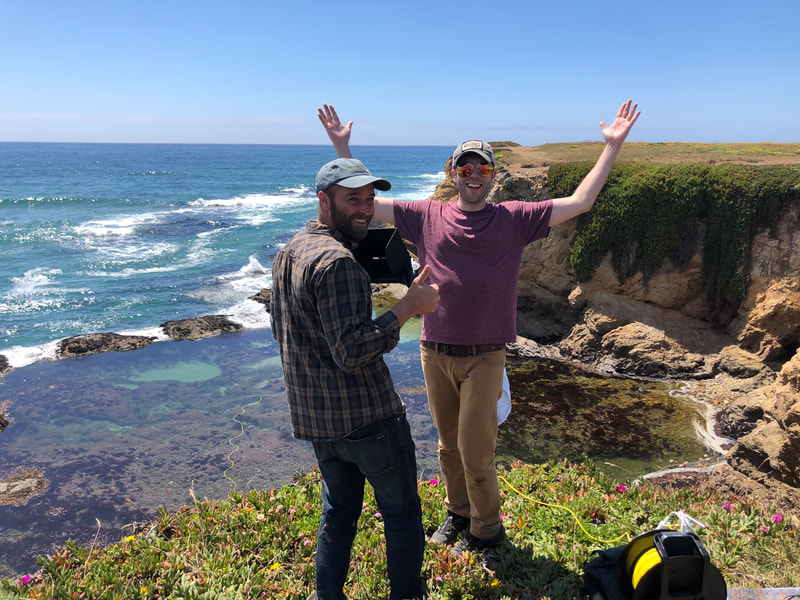

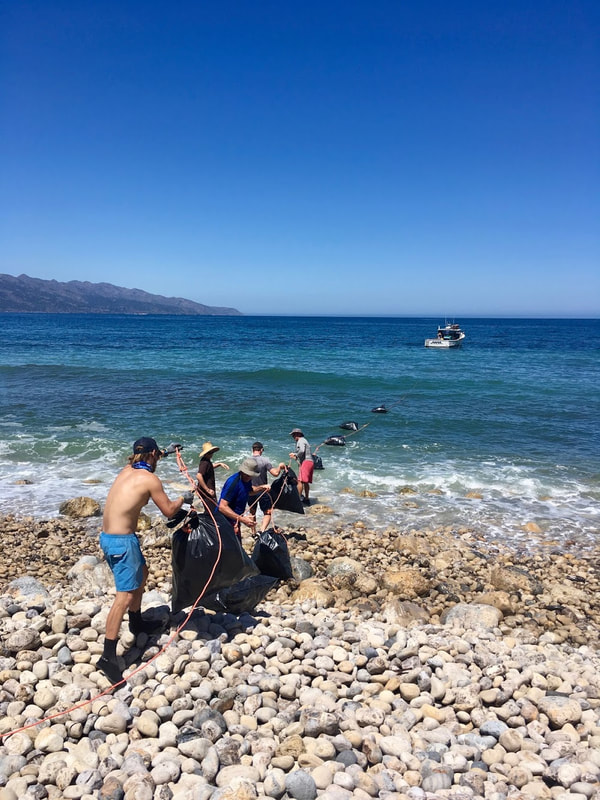
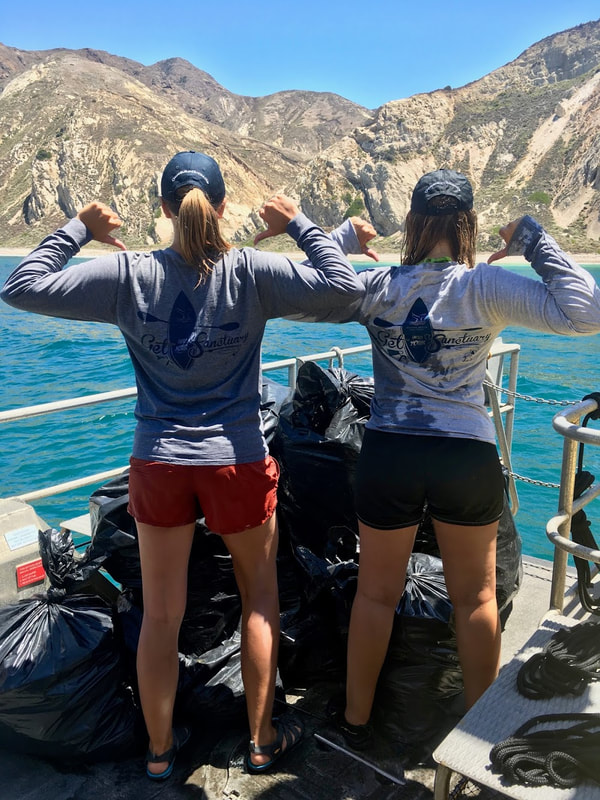
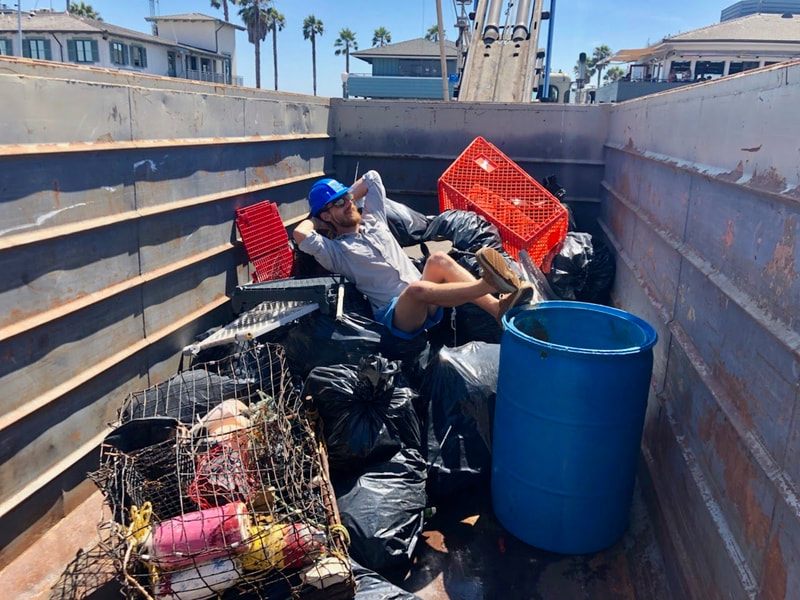
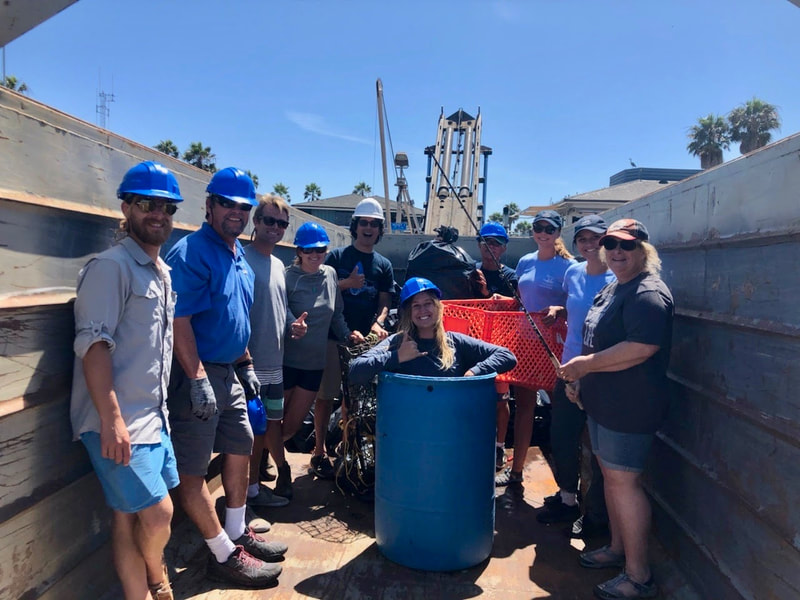
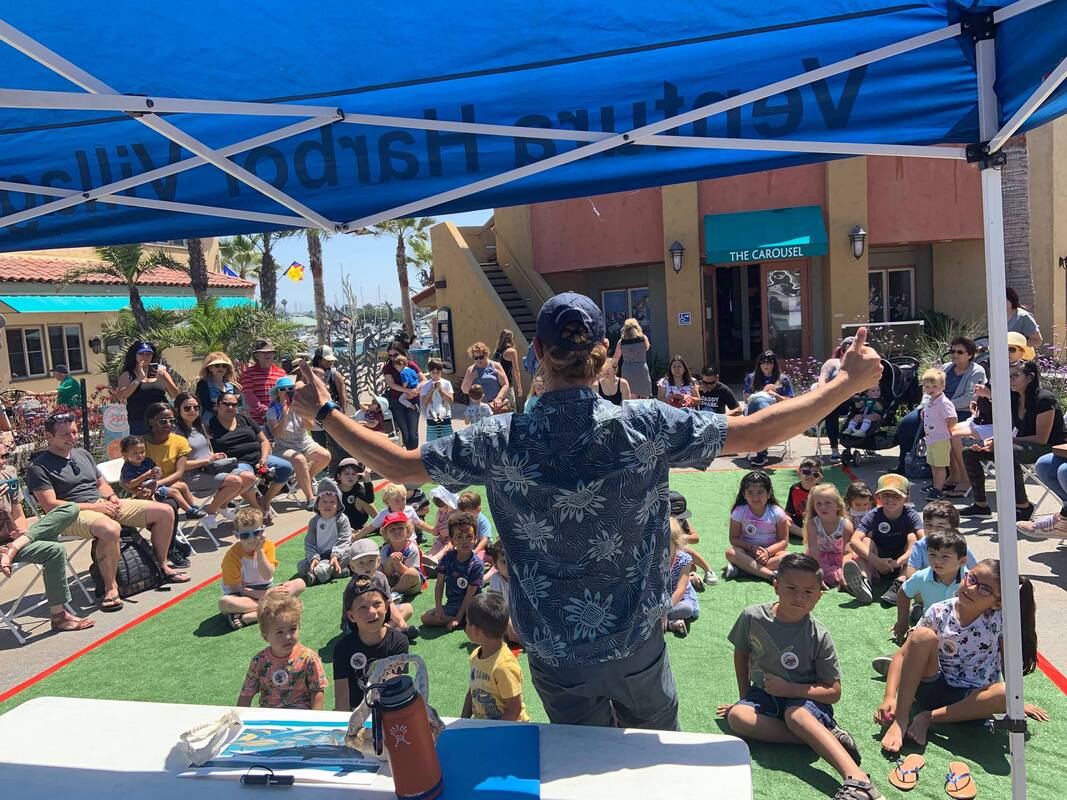
 RSS Feed
RSS Feed
